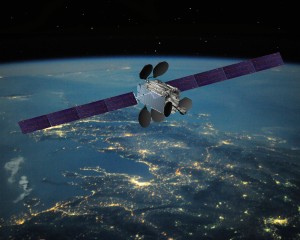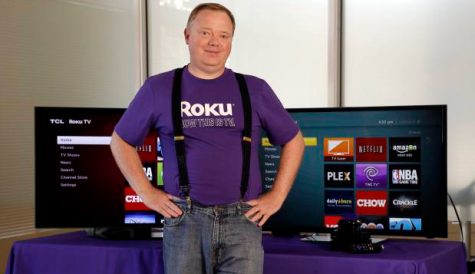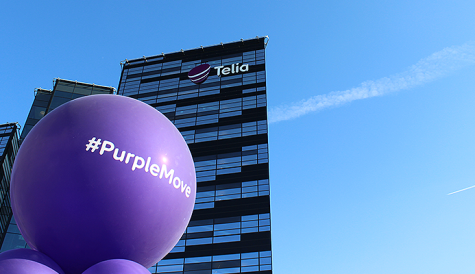Satellite innovation: advances in orbit
The increasing trend towards IP-delivered video is changing the face of the broadcast industry, but what steps are the satellite operators taking to remain relevant? Andy McDonald reports.
The rise of internet delivered video services has marked a major development in the TV industry. With the likes of Netflix and Amazon Instant Video establishing themselves as major consumer brands in just a few short years, changing consumption habits seem to point to an inevitable transformation in broadcaster and pay TV operator strategies.
According to IHS Technology research from last year, the growth of Netflix has lead to a “three-fold” increase in long-form video consumption in the US alone and should act as a “wake-up call” to the industry. Parks Associates, meanwhile, recently claimed that the average US broadband household now watches more than 17 hours of non-linear video per-week, compared to just 11.5 hours of linear video, with non-linear video accounting for 49% of video consumed on the TV. Among 18-24 year-olds this rises to 60%.
Counting the costs
With the costs of CDN-based delivery gradually falling, some doomsayers have even predicted that broadcast in general and satellite specifically could become irrelevant in years to come. The major satellite operators dismiss this idea, but what innovations are they bringing to the table that will keep them relevant well into the 21st century?
Digital TV Research predicted last year that satellite TV revenues for its sample of 138 countries will climb from US$87.8 billion (€77.6 billion) in 2013 to US$99.9 billion in 2020. Over this period, report author Simon Murray predicted that satellite TV revenues in 19 countries will decline due to greater competition, forcing satellite TV platforms to offer cheaper packages that will lead to lower ARPUs.
The outlook for satellite is a mixed picture. Digital TV Research predicts that the number of pay satellite TV homes will climb from 192 million at the end of 2013 to 271 million by 2020. Subscriber totals will fall in 13 countries but more than double in 47 countries. Gains in growth markets including Asia Pacific and Latin America will help satellite TV operators in years to come, but how will they fare in developed western markets with higher broadband penetration and faster internet speeds?
Intelsat’s vice president of media product management, Peter Ostapiuk, concedes that there is significant market fragmentation and that viewership of OTT platforms is growing, but says satellite remains complementary to the CDN network. This is largely because – when it comes to broadcasting live, linear events to many people at once – satellite remains the most economical delivery option.
Ostapiuk points out that while CDN costs may be coming down, they remain variable and are based on the number of viewers accessing content. “Even though that per-megabit price might be falling, I think as you see the increased growth of the subscribers viewing OTT content, the costs of the delivery of the broadcast, especially linear content over-the-top, will be actually rising,” he says.
Wilfried Urner, chairman of SES Platform Services, agrees that in economic terms satellite is “by far” the best solution for content delivery to the home. With a flat rate charged for satellite capacity, rather than pricing that is dependent on how many concurrent users you have, he claims “it’s always cheaper, regardless what the price of the CDN is, to use satellite.”
“The question, perhaps, should be whether terrestrial networks can cope with the increasing demand. Let’s assume for a minute that today’s video content was to be conveyed by terrestrial fixed networks only. In this case, data consumption per household in Europe would be multiplied by a factor of at least 35. Something in my view that is not economically feasible at all,” says Urner.
Hispasat’s chief commercial officer, Ignacio Sanchis, describes the costs involved in delivering linear TV services using over-the-top technology to mass audiences as an obstacle that will remain for some time to come. By way of an example, he says: “CDN costs would need to fall by a factor of 8,000 to 10,000 to fulfil the UK national TV demand at the same cost as the most efficient broadcast technologies.”
In late 2012, IHS Technology released a study called ‘Scaling OTT: Do the economics stack up’, in which it claimed that the CDN cost-per-hour to provide OTT streaming of standard-definition video exceeds satellite when the audience reaches 8,000. Sanchis says that even if CDN prices have dropped by roughly 5% year-to-year in the last two years, the costs still remain heavily in satellite’s favour.
“If I look ahead to such a period, 10 years from now, we estimate that satellites – other types of broadcast networks as well but satellites in particular – would still remain significantly cheaper for linear programming,” says Sanchis. However he admits this does not apply to the “very long-tail type of channels.”
Eutelsat Communications’ director of innovation, Antonio Arcidiacono, agrees. “Of course, if you are starting a video service for 1,000 people and you are targeting only the main cities in Europe where you have fibre connection and so on, I would not recommend you to do it via satellite, because it would not make sense. But if you are targeting millions of customers in all continental areas, that’s a totally different story.”
Advent of 4K
Ultra High Definition 4K video has been the talk of the trade shows in recent years and looks set to be the successor to high-definition video in the not too distant future. While OTT services including Netflix have made headlines by throwing early support behind the technology, the capacity requirements needed to deliver UHD over IP will only exacerbate existing cost issues for mass-delivery over CDNs – according to Urner by a factor of “three or four times”.
Satellite’s usefulness in delivering 4K to wide audiences is a compelling argument for its continued use in the [icitspot id=”363832″ template=”box-story”]broadcasting chain, and a number of pay TV providers are already experimenting with the technology.
Last October, Tricolor TV in Russia began testing a pilot, satellite-delivered, Ultra HD channel. In the US a month later, DirecTV claimed to be the first multi-channel video provider to offer 4K Ultra HD programming direct to customers’ TVs, doing so through its Genie HD DVR and compatible Samsung UHD TVs.
Meanwhile, Sky has staged 4K broadcast trials in both the UK and Germany, with rumours that a commercial service is due to follow. Speaking at the SES Ultra HD conference in London recently, Stephan Heimbecher, head of innovation and strategy, Sky Deutschland, seemed to confirm this, saying that Sky would address the million plus 4K-capable devices already in the market with a German 4K service at the end of this year or early next year.
Though it did not announce its involvement at the time, Sky Deutschland initiated an end-to-end 4K trial with SES back in November. The satellite operator broadcast a live concert by US rock band Linkin Park from the O2 World arena in Berlin via the Astra satellite position at 19.2° East, encoded in 10-bit HEVC/H.265 in 4K resolution. SES’s Urner believes that “a lot of channels” will start to broadcast in 4K quality over satellite from the end of 2015 to 2016 and beyond as new TVs start to support 4K as a de facto standard.
At Intelsat, Ostapiuk says that the same shift that the industry saw with the move from standard definition to high definition – brought about by the advent of DVB-S, 8PSK modulation and MPEG-4 compression – is beginning to happen again with UHD. “We probably will be seeing within the next 24 months the launch of several linear 4K networks. With DVB-S2X modulation and with highly efficient video coding, also known as HEVC or H.265, you’ll see a 30% to 40% efficiency on the modulation and 50% efficiency on the compression,” he says.
Ostapiuk argues that with both these new technologies, the price of transmitting UHD content over satellite “is going to be comparable to what it costs to deliver the HD channel in MPEG-4 and DVB-S 8PSK today.” For delivery of 4K over-the-top, on the other hand, he says you would need a roughly 20 Megabits-per-second connection in the last mile. “Very few consumers today have that. It almost requires fibre-to-the-home infrastructure to be able to achieve that on a consistent basis.”
Hispasat’s Sanchis agrees. “Satellite led the digitisation of TV, satellite led the deployment and the penetration of high definition TV. We expect the same to happen with regards to Ultra High Definition – be it 4K or 8K,” he says. “We believe so much in the fact that satellite will be driving this new paradigm of TV that we already decided one and a half years ago to launch our 4K channel – Hispasat 4K.”
Hispasat first launched the promotional 4K feed in Europe in 2013, adding North and Central American coverage in 2014. It now has plans to add South America in the near future.
“Today we are delivering HEVC-based video below 18Mbps for a full 4K channel. Our expectation is that we will probably, in a couple of years’ time, be close to the mark of 10 Mbps for a 4K channel. This will certainly push the commercial deployment of linear [4K] channels,” said Sanchis.
As Eutelsat’s Arcidiacono points out, “The Amazons and the Netflixes are showing that 4K is a reality, they are pushing the 4K, [but] now they have enormous problems in delivering 4K at a reasonable quality level, because of the terrestrial lines.”
For Eutelsat, he says, “this is good news” because audiences are being educated about the kind of high quality content that they will also be able to access through satellite – something that will be especially useful to viewers that live outside of fibre-connected cities.
Hybrid innovation
For the satellite operators, innovation does not begin and end with 4K delivery and, far from being a threat, many in the satellite industry believe that the advent of IP-delivered content actually presents an opportunity for the operators to deliver advanced hybrid services.
“I think that satellite is the perfect complement to fibre and the CDN network, and I think the future is really around building the network,” says Ostapiuk at Intelsat. He claims that the hybrid model brings with it the flexibility to choose the best distribution path based on geographic location and type of content – be it on-demand or linear.
Hispasat’s Sanchis says that with a large number of people now consuming linear content on multiple devices in the home, receiving that content via CDN may not be the most efficient way when there is already a satellite broadcast feed to the home. “Using satellite-delivered content and then redistributing IP in-home seems to be a much better approach for two reasons: cost-efficiency, and quality of service,” he says.
With this in mind, Hispasat started work on project SATURNO (SATellite Universal Redistribution NetwOrk) back in 2010, with an aim of developing solutions that converge with high-speed IP technologies (Giga-connectivity) and re-use cabling available in the home. Its main objectives focused on research and development activities related to various points on the distribution chain for multimedia distribution in the home.
However, Sanchis claims that “last year we also reached the conclusion that if we want this to succeed and we want the consumer electronics companies to adopt this kind of solutions in their devices, we will probably better push a singular standard as an industry.” As such, Hispasat has now joined forces with SES to work jointly on the SAT>IP open standard.
Founded in 2012, SAT>IP is designed to tackle the same concept that Hispasat was working on independently – converting the satellite signal to IP format, either in the antenna itself or in a SAT>IP server connected to the IP-switch or IP-router. SAT>IP thus allows satellite programmes to be received not just on IP capable set-top-boxes but also on other modern IP capable devices like PCs, laptops, tablets and smartphones.
Sanchis says the aim is to now open out SAT>IP to even more industry players: “We are going to create the SAT>IP Forum, which is open to satellite operators, to DTH operators, to broadcasters and to consumer electronics companies to jointly develop the SAT>IP standard and make it available in a competitive way to manufacturers and operators. This is certainly one of our key targets in video innovation.”
SES announced its first IP-LNB (low-noise block down-converter) device, capable of delivering and forwarding eight concurrent channels from the transponders of a satellite via IP unicast or multicast to fixed and portable devices, back in 2013. Urner says SES will “definitely continue” with developing SAT>IP and supporting manufacturers. He adds that the firm has “a lot of ideas” for how to come up with other IP applications, related to areas such as navigation and TV guides.
According to Eutelsat’s Arcidiacono, “the convergence towards IP is opening up a whole series of services” that will be helpful “for the end-customer and for the broadcasters.” He says that Eutelsat started to develop products to marry the two worlds of broadcast and IP around five years ago, with an aim of not only delivering IP-content directly to end customers, but also providing interactivity.
Eutelsat’s resultant Smart LNB enables it to offer low-throughput applications via satellite. By swapping LNBs designed purely for reception of DVB TV with the Smart LNB, Arcidiacono says the antenna can “receive, demodulate, IP encapsulate and distribute to the home IP-streaming services, push VoD services and all sorts of IP services, while at the same time be interactive.” With Smart LNB, broadcasters and platform operators can expand their offers with in-home and interactive applications, covering the likes of audience measurement, home automation and security and e-health.
Other areas of innovation for the satellite operators include evolving the design specs of the satellites themselves – deploying spot beams in the C-band, for instance. “Our current satellites are all Ku, but the future designs include the C-band spot beams as well,” says Ostapiuk at Intelsat. “Because of the greater efficiency [and] the more bits per MHz that we can transmit, we can actually decrease the cost of the transmission for regional channels.” He claims that deploying spot beams in the C-band will allow broadcasters to regionalise its output in smaller markets where they don’t already offer dedicated channels.
Over at Hispasat, Sanchis says that it is expecting growth of Ka-based throughput satellite architectures, which will allow it to deliver multi-spot satellite broadband as part of a “full satellite triple-play” offering. With this innovation plan, he says “we will get the TV broadcast breaching the household on Ku wide-beams, and we will get broadband reaching on Ka spot-beams.”
“We’re working on the technology. Most parts of the technology exist, but there’s still some developments and integrations to be done. We expect that these solutions can probably be available a few years from now,” says Sanchis.
While consumer viewing habits may increasingly be turning to multiscreen and on-demand, the reliability, pricing and far-reaching coverage of satellite – particularly for linear content – will keep it relevant for years to come. There is also room for satellite to grow in terms of innovating on the services that it can provide. With large areas of even developed countries still suffering from slow or variable broadband speeds, and pay TV operators keen to keep a competitive edge in a fragmented market, the advent of 4K is sure to arrive via satellite; just not on an exclusive basis.




